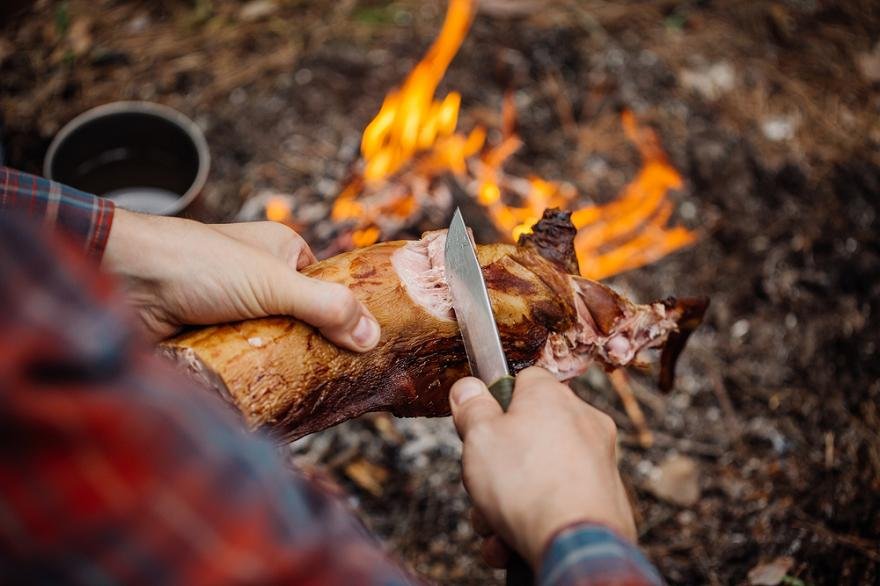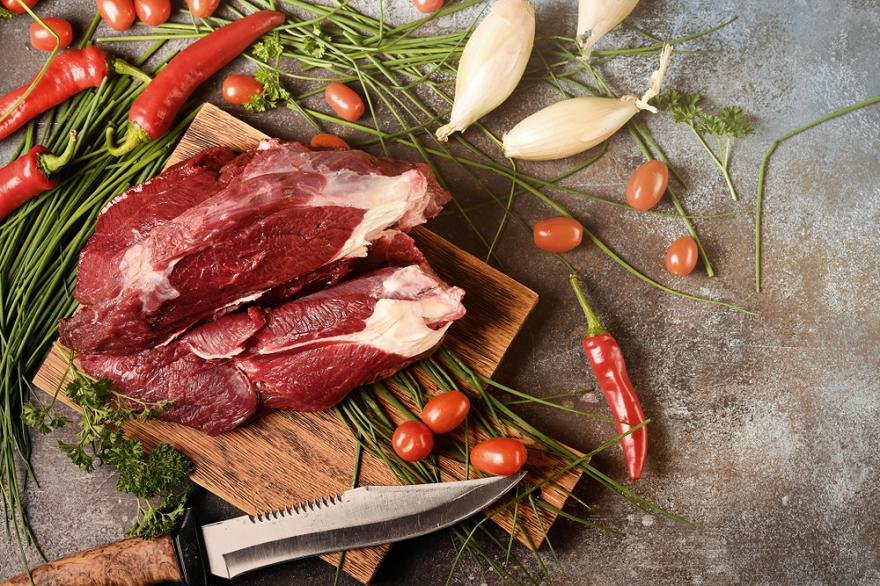Wilderness survival is an art; a test of skill and strategy, though more importantly, one of knowledge. For the adventures that require the hard work of providing food and shelter to spend the nights and days outdoors, or for when the car has died and suddenly you must camp the next few days in an unknown woods before help is anywhere near.
To protect yourself, feed yourself, and provide for yourself in the outdoor environment, one must know how to choose the perfect knife. To be enough for hunting but small enough for detailed work, a tactical survival knife must have the right size and type of blade, with importance from the length of the metal to the shape and edges that make it up.

In cases of combat, the best knife has a handle with a good grip and a heavy blade, and, while similar to survival knives in that they should contain a fixed blade (unless illegal in your area) and full tang, there are variations to the type of blade that can be considered “the best,” as it all depends on personal preferences and fighting styles. You will also need to consider the knife handle material as you will need something that will last through intense wear and tear. Something like a carbon fiber or a G10 knife handle will not only outlast anything made of wood or cheaper plastic but will also be a lighter, easy-to-grip material.
What are the Purposes of Your Tactical Survival Knife?
To commence, in order to survive in the outdoors, a person must have a blade which will help them in their journey to eat, sleep, and stay warm. From the shape to the metal it is forged with, the best tactical survival knife must aid in all necessary survival activities, such as building shelters, batoning wood, digging, hunting, or other food preparation.
Overall Length of the Knife
Primarily, the best knife for survival should be chosen based on size. When choosing the best tactical knife for survival, one must look for a knife that is somewhere around 10 inches long with a nearly 5-inch blade. This is essential for tasks like hunting and, on the flip side, those involving chopping wood.
Regarding hunting, a small feat such as setting snares would be impossible without a smaller-sized knife for detailed work. And, with a knife too large, how could one dress smaller sized game? It would be ridiculous to attempt. However, too small a knife (4”-6”) would be worthless in tougher tasks such as batoning wood, or striking the knife with a larger object to drive it through a piece of wood to split it in half, or even chopping it in general. And, with cold and sometimes deadly evening, a nice fire might be on the agenda in wilderness survival.




Which One would be Best: Folding or Fixed Blade Knife?
A second feature that reigns superior in qualifications of the perfect tactical survival knife is a fixed blade. When cutting a piece of material, or even food, or participating in hunting-related activities, the last thing someone wants is for their knife to bend and ruin everything.
Dressing game goes wrong, or the wood splits the wrong way, and you must try again for essential survival activities. Or, when trying to perform survival related tasks, such as cutting wood or material for traps, it becomes tiresome when your knife continues to fold back in half when you need it to stay put.
All can be solved with a fixed blade. Though some might claim that a folding knife has the advantage of being carried around easily, it is important to remember that this is only one benefit. The benefits of being able to easily perform survival-related activities over the ability to carry the knife easily are far higher.
In addition, fixed knives can be carried with a sheath and decorated with a loop to attach to belt buckles, and there are other ways to make fixed knives much easier to carry around. However, it is recommended to carry both, though the ideal survival knife is not the one that folds, as this can be used for far fewer activities and cannot adapt well. Not only do folding knives run the risk of folding back up and moving around while performing important tasks, but they also run the risk of breaking more easily.
In more rigorous activities that place more strain on the knife, such as batoning, spearing, or hunting larger animals, the possibility of the knife breaking is less for a fixed knife, and if the knife breaks (as it might for a folding knife), suddenly you are left without a knife at all. When preparing food from a hunted game, it is made much harder if the knife you use folds in on you constantly, showing the multiple benefits of a fixed blade on survival.




Knife Tang
Another element that will prevent the crucial survival knife from breaking is a full tang. As opposed to the partial tang, the full tang provides the longest and largest amount of metal, as it means the metal continues through the entire knife, blade, handle, and all. It is harder to break metal the larger it is. Partial tang knives can potentially become loose whatever material the metal is held in and fall out.
This can occur on a smaller scale with full tang knives as well, though partial tang knives are hardly functional after coming out their “wrap.” A full tang tactical survival knife can be wrapped with something else and still be useful, while the other would be hard to work with. In addition, even in its covering, a partial tang can become loose, as previously stated, which increases the difficulty in cutting through things such as meat and other materials.




Selecting the Blade Shape or Tip
Next, the shape of the blade and its point can be the deciding factor between taking 10 minutes to cut food and wood and taking an hour to hunt. The most simple and straight-forward truth is that a tactical survival knife must have a sharp pointed tip, or it absolutely cannot fit the criteria for “best tactical survival knife.” When hunting, a round knife tip, or any tip that does not end in a sharp point will be useless in driving the knife through prey, and even in self-defense. In other words, it will save your life or help you obtain food for survival.
The sharp point will have quicker access whenever the situation arises that you need to stab something. In addition, the point can be useful for other neat survival tricks such as cracking open nuts or certain foods. Further, the type of blade on a survival knife is important, as, similar to having a sharp point, they make activities such as hunting, foraging for food, and activities with wood much easier.
The two best blade styles for a tactical survival knife are a clip point or drop point blade. These are the best blades for hunting. When looking for a knife with a sharp point, the clip point blade is the epitome of that, and is perfect for detailed hunting activities such as dressing game and skinning animals, and will work well for other detailed activities.
The drop point blade is specific to hunting, in a way, as it can do the same hunting activities, but no more, as it would risk the quality of the knife. Thus, when searching for the best tactical survival knife, the clip point, which can do everything and help with hunting well, is the way to go.




My Recommendation
There are many knives which meet most of these criteria. With everything but full tang, many Ka-Bar knives, such as the BK2 Campanion and BK7 Combat Utility knives have been rated top survival knives on many different websites, though the strength of the metal is still superior. The Gerber LMF II provides everything but a full tang, though it is almost a full tang, with a small portion of the bottom of the knife separated to help with shock absorption and thrusting the bottom of the knife into hard objects.
However, the Fallkniven A1 would fit the definition of the best tactical survival knife, as it meets all of the above qualities, and the ESEE 6P knife does as well for all except that both have blades slightly longer than 5 inches.
All in all, thetacticalknives.com has the best tactical survival knives review that can help you hunt and provide for yourself, there are many knives that can do so, though it is important they meet certain criteria.
Final Verdict
In conclusion, the criteria for choosing the tactical survival knife includes a knife around 10 inches with a 5-inch blade, as it is neither too small for rough activities or too big for detailed work. It includes a fixed blade, which prevents folding during important tasks, such as working with meat and prevents breakage. Also to prevent breakage, it includes having a full tang; and, to aid in hunting activities, is having a clip point blade (or something similar) and a sharp point.
